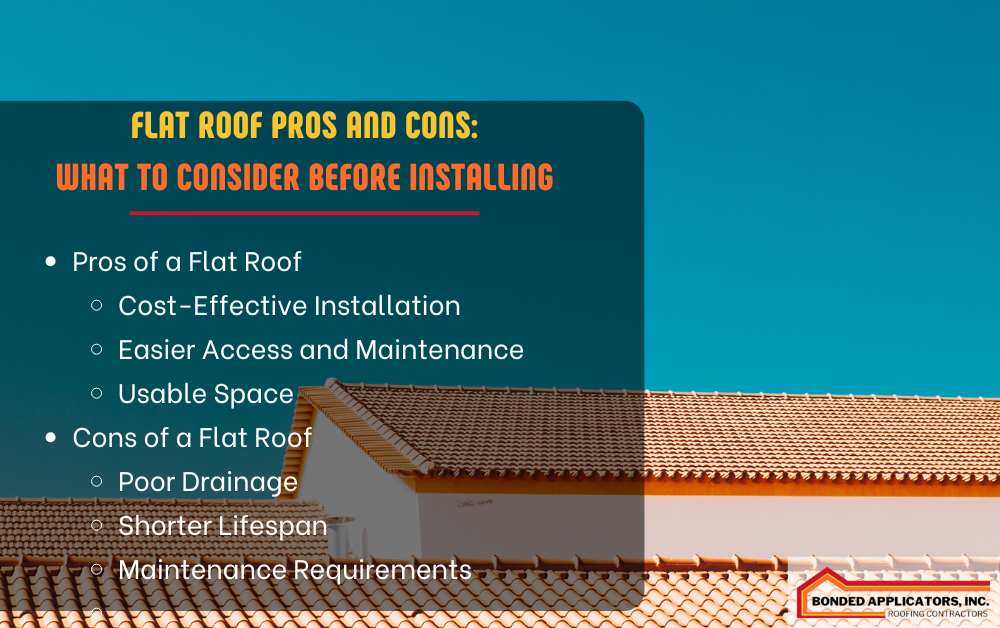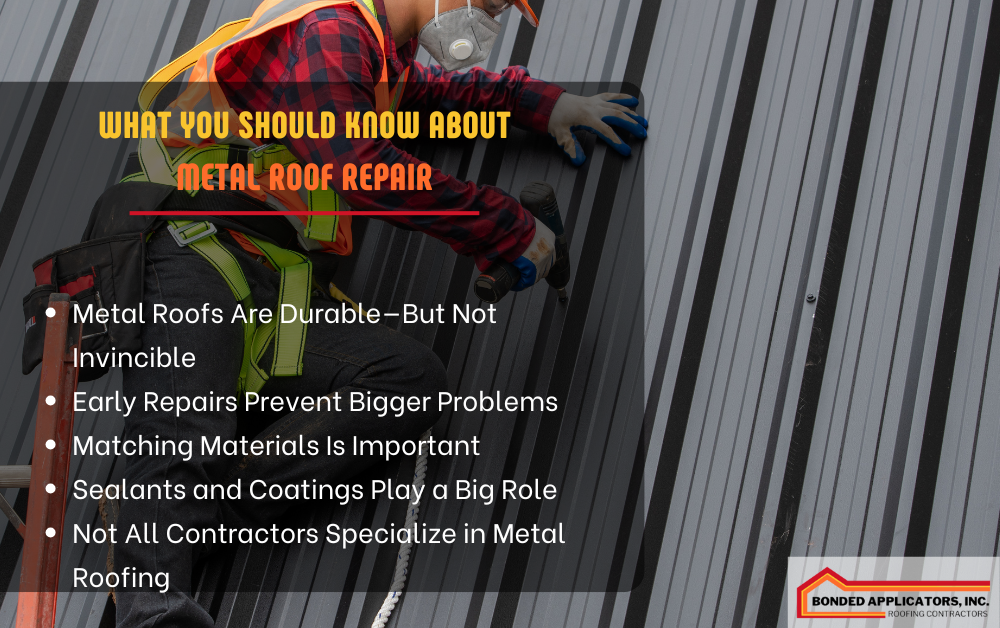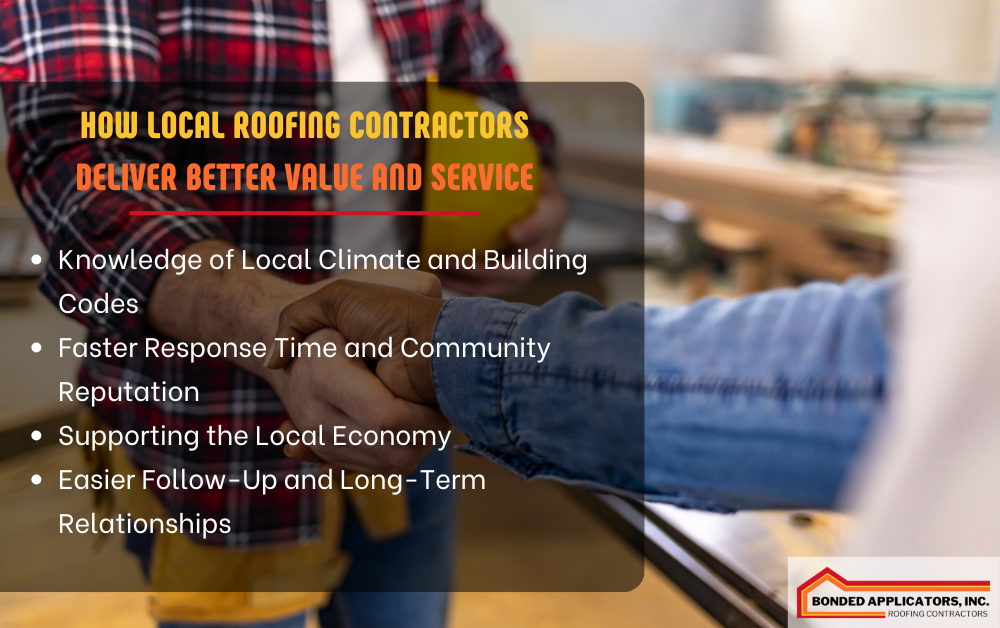Roof ventilation is a key factor that is too often overlooked in a well-functioning home. It ensures proper airflow through your attic space, assisting in the year-round control of ambient temperature and moisture levels. While many homeowners may not think about ventilation when assessing their roof’s condition, it plays a key role in protecting the longevity and energy efficiency of their entire house. At Bonded Applicators, we understand the long-term value that effective roof ventilation provides, and we help homeowners implement smart solutions tailored to their specific roofing systems. In this article, we’ll explore several compelling reasons why roof ventilation is a smart investment for your home.
Extends Roof Lifespan
Prevents Heat Damage to Roofing Materials
Excess heat trapped in your attic can be extremely damaging to shingles and other roofing materials. Roof ventilation permits thermal discharge, effectively reducing ambient heat beneath your roof and preventing premature wear. Without proper airflow, shingles can become brittle, crack, or curl, reducing their effectiveness and appearance. This heat damage can quickly lead to costly repairs or even full roof replacement if left unchecked. By allowing consistent air exchange, ventilation keeps your roof cooler and more durable throughout the seasons.
Minimizes Moisture Buildup from Indoor Sources
Warm air from daily activities like cooking and showering rises into the attic and carries moisture with it. Roof ventilation helps remove this moisture before it can accumulate and lead to deterioration. Excess humidity in the attic can soak the roof decking and compromise its structural integrity over time. If this happens repeatedly, the underlying wood may rot, leading to sagging areas or potential collapse. Ventilation works quietly behind the scenes to maintain a dry, safe environment above your ceiling.
Reduces the Risk of Early Roof Failure
A poorly ventilated attic accelerates the breakdown of roof components, shortening the lifespan of your entire system. By keeping both heat and humidity levels in check, roof ventilation preserves the performance of underlayment, flashing, and fasteners. This added protection minimizes the chances of a premature roof replacement. Investing in proper ventilation helps maximize the return on your roofing investment. When installed correctly, it’s one of the simplest ways to extend the life of your roof.
Reduces Moisture and Mold
Controls Indoor Humidity from Rising
When warm, moist air from inside the home rises into the attic and becomes trapped, it facilitates the proliferation of mold and mildew. Roof ventilation allows this air to circulate and exit, reducing overall humidity levels in the attic. Without that ventilation, condensation may form on rafters, insulation, and other surfaces. Over time, this can damage wood framing and spread harmful mold spores throughout your home. Ventilation is a proactive step toward a healthier indoor environment.
Prevents Mold Growth in the Attic
Mold not only damages materials but also poses health risks to your family. It often grows unnoticed in dark, damp corners of the attic, where ventilation is lacking. Proper roof ventilation helps dry out those areas by increasing airflow and removing lingering moisture. This suppresses the proliferation of mold and mildew before it becomes a major problem. By keeping air moving, you also reduce the need for expensive mold remediation down the road.
Protects Framing and Structural Integrity
Moisture buildup doesn’t just affect insulation and air quality—it also weakens the structural components of your home. When wood framing stays damp for extended periods, it becomes soft and vulnerable to rot. Roof ventilation helps prevent this by allowing moisture to escape before it has time to settle and do damage. Your roof framing will stay stronger, longer, when properly ventilated. It’s a small improvement that offers powerful protection to your home’s skeleton.
Improves Energy Efficiency
Lowers Summer Cooling Costs
In warmer months, attics without ventilation can become dangerously hot, sometimes reaching temperatures well over 130°F. This heat radiates downward, making your air conditioning system work harder to keep your living space cool. Roof ventilation allows that heat to escape, reducing the load on your HVAC system. The result is lower energy usage and more consistent indoor temperatures. Over time, these energy savings add up significantly.
Helps Maintain Comfortable Indoor Temperatures
In a well-ventilated home, your attic acts as a buffer zone, not a heat trap. Roof ventilation helps maintain balanced temperatures in upper levels of the home, even on the hottest days. With less trapped heat in the attic, upstairs bedrooms and other living spaces stay more comfortable. This also reduces strain on ceiling fans and supplemental cooling systems. You’ll enjoy better comfort without needing to overuse your AC unit.
Supports a More Sustainable Home
Reducing your reliance on artificial cooling makes your home more environmentally friendly. Roof ventilation supports this effort by cutting down on unnecessary energy consumption. Less mechanical cooling means fewer greenhouse gas emissions and a smaller carbon footprint. Sustainable home upgrades like proper ventilation can also raise real estate value and resonate with eco-aware consumers. It’s a simple way to move your home in a greener direction.
Prevents Ice Dams in Winter
Keeps Roof Temperature Consistent
In colder climates, ice dams form when heat inside the attic warms the roof, leading to melted snow refreezing at the outer edges of the roof. Roof ventilation helps regulate attic temperature so that heat doesn’t build up and cause uneven snowmelt. This keeps the entire roof surface at a more uniform temperature, reducing the chances of ice forming at the eaves. Preventing ice dams helps avoid water infiltration and structural damage. It also means fewer winter maintenance headaches.
Protects Shingles and Gutters from Ice Damage
When ice dams develop, they can lift shingles and damage gutters as heavy ice accumulates. Water backed up behind these dams may leak under shingles and into the attic. Roof ventilation helps by keeping snow frozen until it can melt naturally without creating dangerous buildup. Proper airflow reduces the risk of long-term damage to both your roof covering and drainage system. It’s a crucial defense against one of winter’s most expensive problems.
Prevents Costly Water Intrusion
Melted ice that seeps under your roof can soak insulation, ruin drywall, and create water stains on your ceilings. Roof ventilation minimizes this risk by addressing the root cause—an overheated attic. With a ventilated roof, snow is less likely to melt unevenly and refreeze, stopping leaks before they begin. You’ll preserve your roof’s waterproofing and keep your interior protected. It’s a cost-effective way to manage winter weather impacts.
Protects Insulation and Interior Spaces
Keeps Insulation Dry and Effective
Insulation works best when it’s dry and fluffy, but attic moisture can flatten or soak it. Roof ventilation allows moist air to escape, preventing it from condensing on or within the insulation. Wet insulation loses its R-value and can no longer regulate your home’s temperature effectively. This drives up heating and cooling expenses while making the environment less pleasant. Ventilation helps maintain insulation performance so your home stays efficient and cozy.
Prevents Interior Wall and Ceiling Damage
Moisture in the attic can migrate into interior spaces, damaging walls, ceilings, and paint finishes. Roof ventilation acts as a protective barrier by reducing attic humidity before it becomes a widespread issue. When moisture levels are controlled, your home’s interior surfaces remain dry and intact. This prevents peeling paint, warping wood, and other costly aesthetic problems. Long-term, ventilation protects both the visible and hidden parts of your home.
Creates a More Comfortable Living Environment
A ventilated attic promotes better air circulation throughout your entire home. This contributes to more even temperatures, less humidity, and better indoor air quality. Roof ventilation also reduces the likelihood of mold-related odors and allergens entering your living space. The result is a healthier, more comfortable home for you and your family. It’s a simple upgrade that delivers lasting lifestyle benefits.
Conclusion
Roof ventilation is one of the smartest and most cost-effective improvements you can make for your home. Covering everything from roof longevity to improved energy efficiency and preventing damage, the benefits are far-reaching. At Bonded Applicators, we’re committed to helping homeowners protect their homes from the top down with expert ventilation solutions. Whether you’re building new or upgrading an existing roof, proper airflow should never be overlooked.
Contact Bonded Applicators today to learn how roof ventilation can improve your home’s performance, durability, and comfort. Let us help you create a safer, more efficient space for years to come.




